Not so many cars have such a menacing presence as a well preserved black BMW E39 with M-power bumpers and angel eyes, don’t you agree? Add up to that torquey engines and long-distance cruising comfort and no wonder it is still a car of choice for drug dealers and mafia hitmen. I am joking of course… or am I? Today, we will review just one such example, and more accurately, the most powerful one before the M5 on the lineup – a 540i.
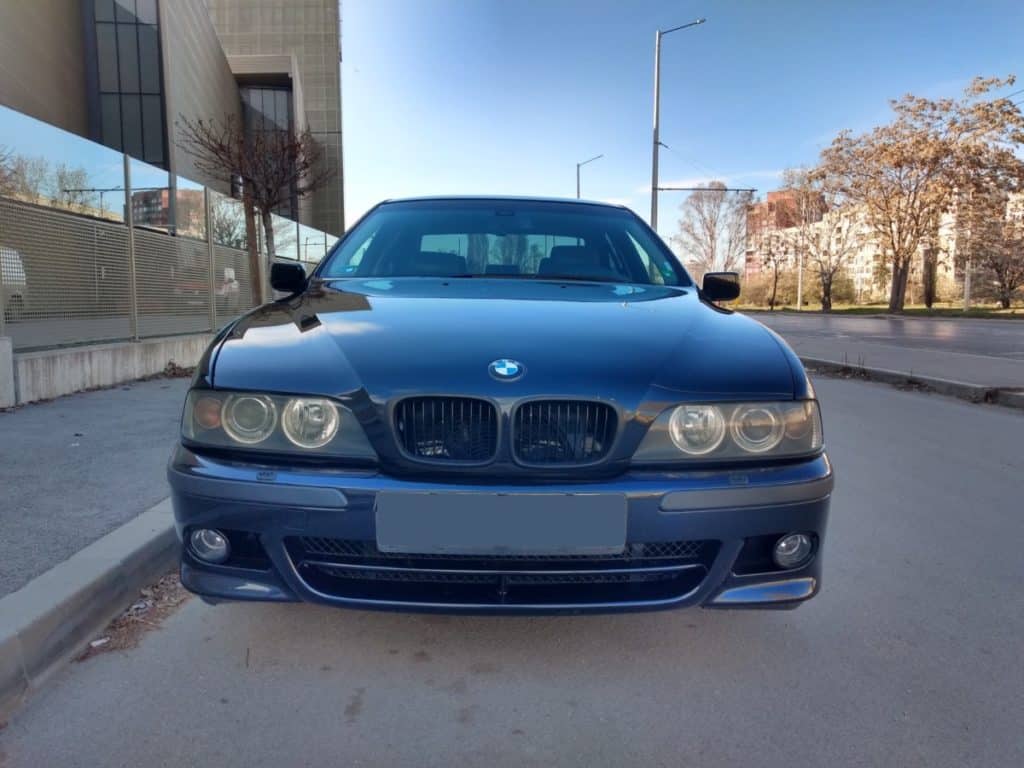
To start with, let’s first quickly go over the trivia facts about the car. The fourth-generation BMW 5-series with internal name E39 was introduced for the 1995 model year. The sedan version was succeeded in 2003 by the E60, whereas the so-called “Touring” (the estate version) remained in production until 2004. It was assembled only in Germany – in the BMW’s factory in Dingolfing. As all other 5-series BMWs, the E39 comes with four doors. This generation was only rear-wheel drive with no 4×4 option.
Exterior
The E39 5-series’ length is nearly exactly 4.8 meters (approx. 189 inches), its width is 1.8 meters (approx. 71 inches) and its height is about 1.44 meters (approx. 55.7 inches). With other words – sufficient for most cases. Its drag coefficient is 0.26, which is astonishing even by today’s standards. To give you a perspective, the Porsche 997 GT3, a purpose-built sports car, has a drag coefficient of 0.31.
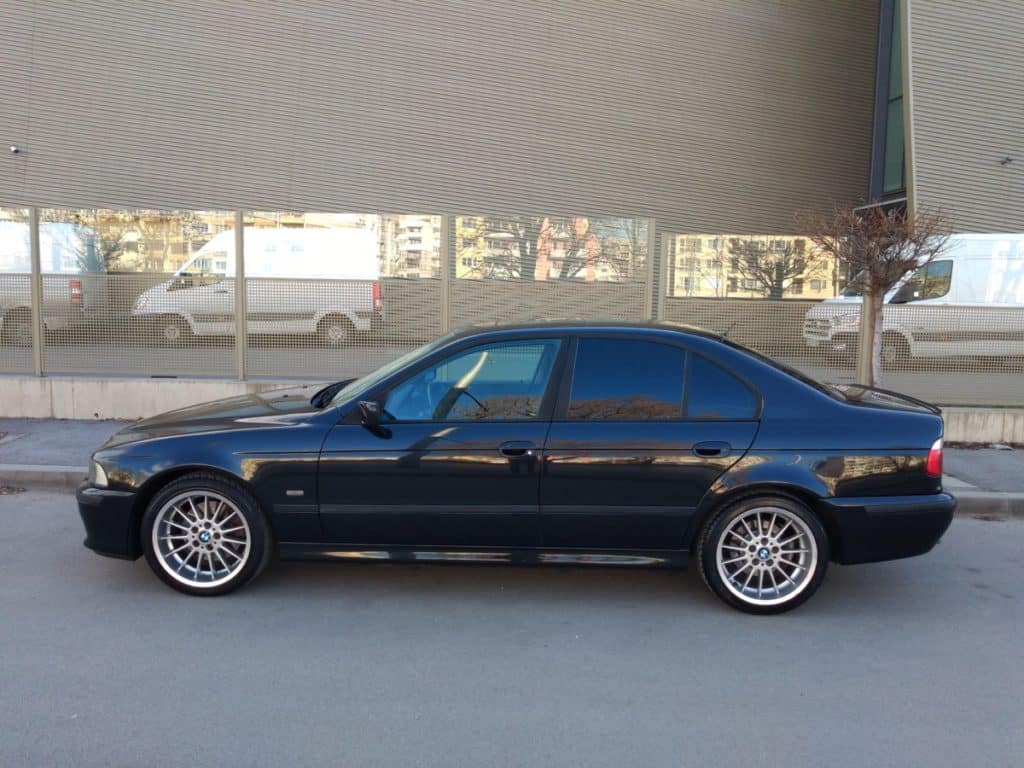
In terms of the exterior styling – there are a few options. Apart from the normal bumpers, the car can be had with M-style ones, which are meant to give more aggressive and sporty looks. You can opt for original parts or aftermarket ones. And there are a lot of options for the latter. The non-original are usually quite good copies and, of course, are also cheaper. When talking rims, you have almost numerous choices. You can choose between the original BMW-style ones or go for the vast array of aftermarket options (our example on the pictures is equipped with BMW’s style 32). In terms of headlights, you can have the normal ones, or the pioneered at the time by BMW themselves, so-called “Angel eyes” which are with xenon light.
One of the things you need to know about these cars is that even though their rust treatment was sufficient when exiting the factory, the car’s age is also sufficient for some brown menace to start creeping in. Of course, it depends on where the vehicle has been driven. Naturally, if it was in a colder and damper climate, the BMW will be more susceptible to rusting. If buying, check the bottom of the doors as one of the most common places and also take a look at the wheel arches. While you are at it, you should also look at the rocker panels for excessive corrosion or dents. If present, it may mean that the car was being drifted by a not very skilful driver and the rocker panel may have hit a curb at some time of performing the stunts.
Interior
In a BMW tradition, the features came at a premium so when buying, you can decide if you want to go after a minimalistic in terms of extras car or a one brimming with the age’s pampering. However, the interior, as well as the exterior, is highly modifiable due to the vast array of factory and aftermarket parts. For the dashboard, you can see mahogany, varnished black elements and some other options. For the seats – a palette of different coloured leather or textile. The first owner could have also selected from the Recaro style seats or the normal ones. Both options are big and comfortable. In terms of sound controller systems, there are three original options offered throughout the years of production – a simple radio with a disc-changer option, a small-screened one with a cassette player and navigation and a big-screened navigation option. There is even a selection of different steering wheels with three or four spokes. All of the above was offered by BMW and then comes the aftermarket armada of choices. You can pretty much faint from prolonged browsing in the web for different bits and pieces, while checking out other people’s E39s.
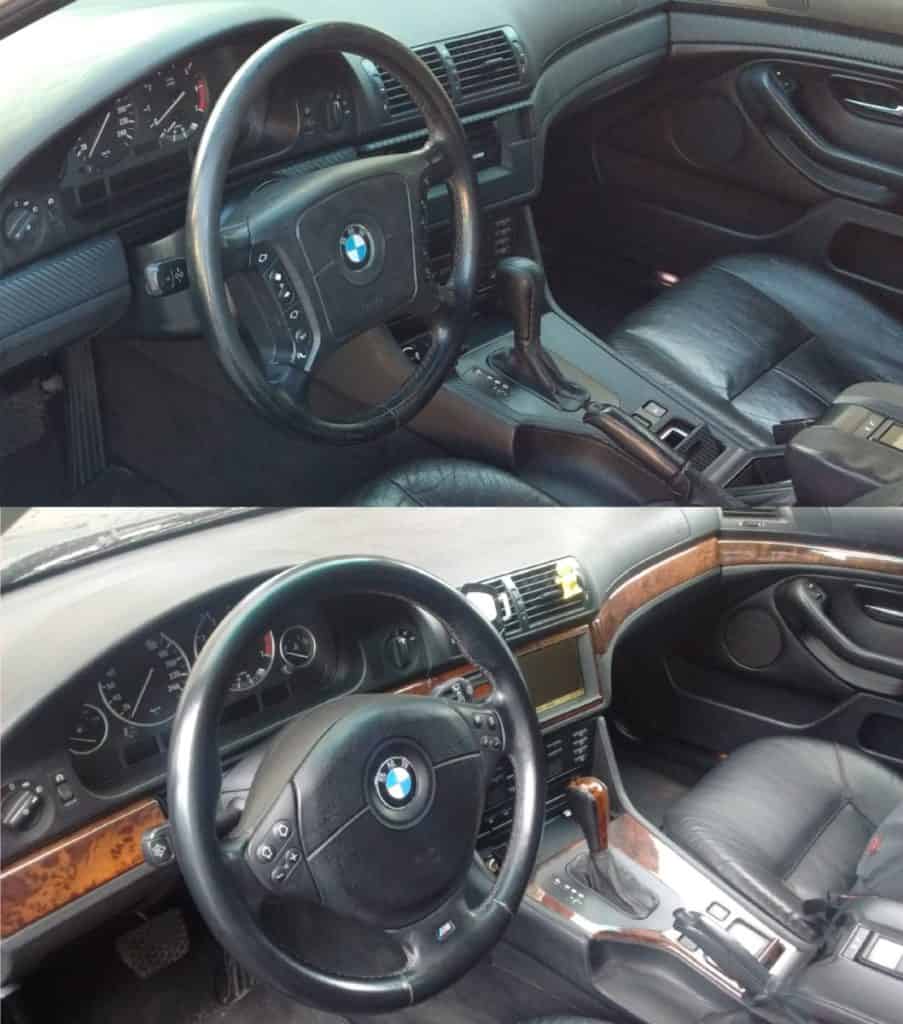
Regarding the seating and comfort inside the cabin, there is enough room in the front and the back for almost all sizes of humans and 4 people can travel very well. When talking boot space – it is 460 litres for the sedan and 410 litres for the estate version, extending to over 1500 litres if the seats are folded.
In terms of issues with the interior of the E39 – be advised that the model is popular with poorly made door seals which sometimes can cause a bit more noisiness on a motorway than expected. Also, the drainages on the bottom of the doors get clogged up and in extremely bad cases – water can leak in through the doors (clearing them from time to time prevents the issue). Besides these, there are relatively few issues with the interior of the car. Of course, have in mind that this is not a new machine so there can be other faults too, but speaking for the most prominent ones, three more are worth mentioning. You will likely come across to the electronic window motors failure, the ever-dying pixels on the dash and, if the car has a sunroof, there can be electrical issues with it. If the window operators fail, simply change them – they don’t cost that much. For the pixels, firms or individuals can fix them for your dashboard for also a relatively modest amount of money. This is the cheaper and probably the better option than getting yourself a new dash because chances are that the new unit’s pixels will also fade. This part was just not manufactured well. And for the sunroof – better have it checked by a professional.
Engines, transmissions and other components
The BMW E39 540i was equipped with the M62 family of engines, produced from 1995 to 2005. The engine is a 4.4 litre V8 producing 286 hp and 440 Nm of torque. The M62B44 was integrated until 1998 and its update – the M62TUB44 for the rest of the production years. The earlier engine did not include VANOS (the variable valve timing system of BMW) and from 1998 the M62TUB44 was equipped with a single VANOS. Something important to mention about these motors was that their cylinder walls were coated with Nikasil and later – Alusil. These alloy coatings have two properties suitable for all engines, especially for eight-cylinder ones – they are heat and friction-resistant. Unfortunately, the Nikasil is susceptible to sulphur which can be found in larger quantities in low-quality gasoline. This saw the demise of many earlier engines until the early 00s as high-sulphur gasoline was common throughout the world. After 1996, BMW switched to Alusil, which is not sensitive to sulphur, and this practically fixed the issue.

Possible more major and more common known issues with the M62 engines include troubles with the cooling system (in particular – radiator and water pump failures, coolant leaks from various places), valve cover gasket leaking oil, failures of all kinds of different sensors and modules, VANOS failures, valley pan gasket coolant leak, ignition switch failure. Lastly, it is worth mentioning that rarely the DISA valve flap can break and particles can go in the intake manifold, causing… well… catastrophic damage to the engine. At this point, some may think that these issues are outrageous and I am not going to argue. There are cars with better reliability ratings and others with worse. All of us have different tolerances for car issues, though, so everyone should decide for themselves how to consider the E39 540i.
A few words for the transmissions. The options for the 540i were between one manual and two automatic transmissions. The manual was the 6-speed Getrag 420G transmission – an overall reliable unit, built to withstand up to 499 Nm (59 more than the M62 produces). The automatic ones were both 5-speed. Earlier E39s (until 1997) were equipped with the ZF 5HP30. This automatic transmission was considered experimental by ZF and was made to endure up to 560 Nm of torque. It is not the quickest transmission but was adequate for the age it was built. BMW continued its integration until the end of the E39 production, along with the other automatic transmission, introduced to the 540i in 1997. The newer one – ZF 5HP24 is lighter and a bit faster than its bigger and older brother. Its Nm tolerance was precisely matching the maximum engine’s output of 440 Nm. Both of these transmissions can suffer from clutch drum failure, while the cars equipped with the 5HP24 can also experience issues with delayed engagement or slipping of the reverse gear. The 5HP30 is generally considered to be the more reliable of the two.
Other parts worth mentioning include the suspension of the E39. In this 5-series, BMW utilized aluminium for most of the components of the front suspension. The front shocks and wheel bearings can fail prematurely but updated, more reliable design of the original parts can be sourced. In regards to the rear suspension – it depends on whether the car is a saloon or an estate. The saloon ones resemble the so-called “Z-link” design of the E38 7-series, and the “Touring” version uses a self-levelling air suspension. Both systems are considered to be reliable.
To finish this section of the article, I just want to remind that these cars are definitely not new so you should have lower expectations for reliability if buying. This is not to say that you should expect colossal breakdowns all the time. If an old car is maintained well, it can be as reliable as a new one or even more so.
Driving it
Now to the good stuff – what’s it like to drive? Let’s start with the following sentence: In my humble opinion, the BMW 5-series E39 is a stellar driver’s car. For what it is with the 4.4-litre engine – a mid-range sedan, weighing a little over 1600 kg, the 540i is agile, has a tuned to perfection suspension setup, engine torque and noise coming directly from the driver’s Heaven and a balance and poise to cry from exaltation for. It is simply marvellous.
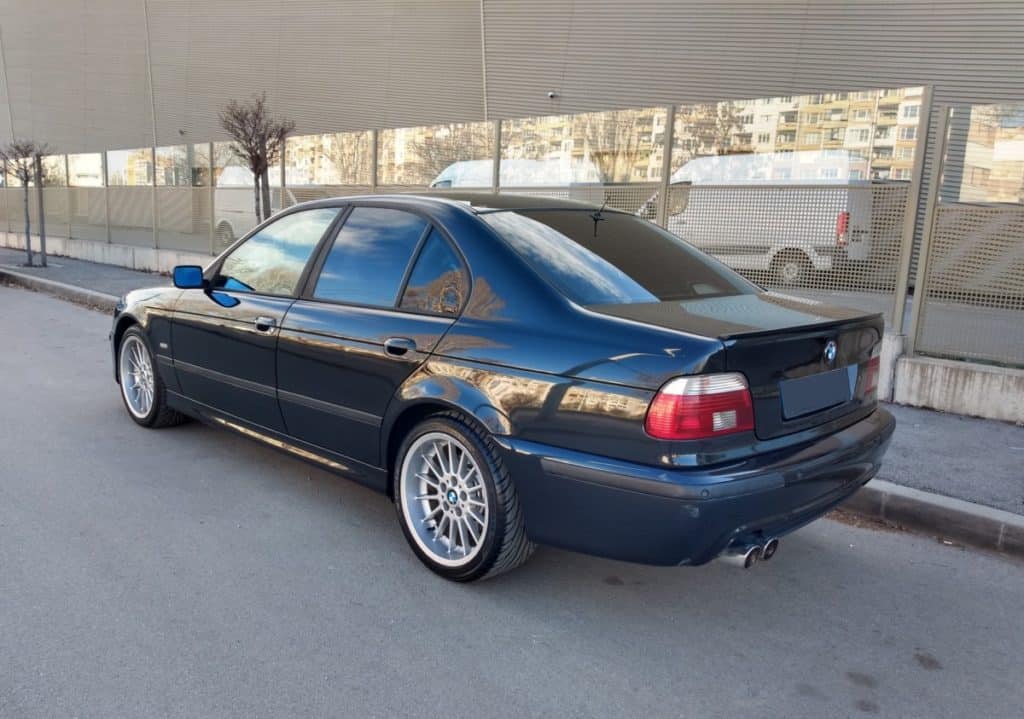
If you like the process of driving a car and are after one of these gems, try to get it with the Getrag’s gearbox. Like the Honda CRX, I reviewed already (and maybe any other car in this respect), the 540i is much more engaging to drive with the manual transmission. That’s not to say that you cannot find pleasure in driving the automatic version. The power delivery, poise and sound of the car will put a smile on your face either way and if you are the sort of person who prefers automatic transmissions, you will be quite happy with this option too.
Other than that, the driver’s positioning and visibility are excellent. The comfort when in the cabin is also great. You can feel the interior elements’ quality and the precision of putting them together just by sitting in the E39. When driving, the car may feel a little heavy for some but in a good, sturdy way. It’s also fair to say that its weight of a little over 1600 kg should not be regarded as heavy by today’s standards for this size of a car, especially when you consider its eight-cylinder engine.
The ride comfort is outstanding and this is primarily due to the suspension setup. The latter is simply marvellous. Not so many cars have this – very sufficient feedback, but with great comfort and at the same time, the vehicle does not lean way too much on corners. It is not without any body roll, though. The setup sucks up the initial hit of the pothole but notifying you that what you just went over was such in a very gentle and informative way. If you want, you can have an M-power suspension, but that’s not good for your spine. It has a miraculous ability to make you feel that the car will disintegrate after going through even the tiniest of bumps. Not only this, but its feedback is also uninformative. You kind of feel the road’s unevenness with a delay and a lack of accuracy for the pothole’s size. And while this is, let’s call it acceptable in a car like the Honda CRX, any sort of sport suspension simply does not suite such a cruiser of a car like the 540i.
The heaviness of the steering wheel of the E39 differs depending on the year of production. In any way, it also provides good feedback when cornering without being hectic. In earlier models, it is heavier, and mid-production BMW changed the mechanism, making it lighter.
The handling of this BMW is phenomenal. The steering is telepathic for this size of a car, and the movement of the 540i on the road is very predictable. The weight is perfectly balanced, which makes this a very forgiving car to drive. When driven, this BMW feels analogue, feels as a just well-engineered car in any aspect that you can think of. The brakes are also great as you would expect from a performance sedan/estate. I also have to note that the speed of the car is not really felt very well. This is partially due to the car’s comfort and partly due to the eight-cylinder engine’s torque. If you are not paying attention to the speedometer, you can often break the speed limit without noticing.
This brings me to the last point I would like to discuss – the engine torque setup. These 440 Nm are available from really low down the rev range which, added to the bass engine noise, enhances the feeling that you are in a muscle car when cruising in town and doesn’t necessarily make you step on it all the time when you are not in town. There is simply no need. What I am on about can be felt very clearly if the 540i is automatic. You have engaged Drive mode of the transmission (not Sport) and are first on a red light. When it gets green, you just lift your foot off the brake pedal and gently place it over the accelerator without almost any pressing. Before you know it, you are driving above the city speed limit, leaving all other cars way behind and the rev meter shows only 1400 RPM. You haven’t even tried.
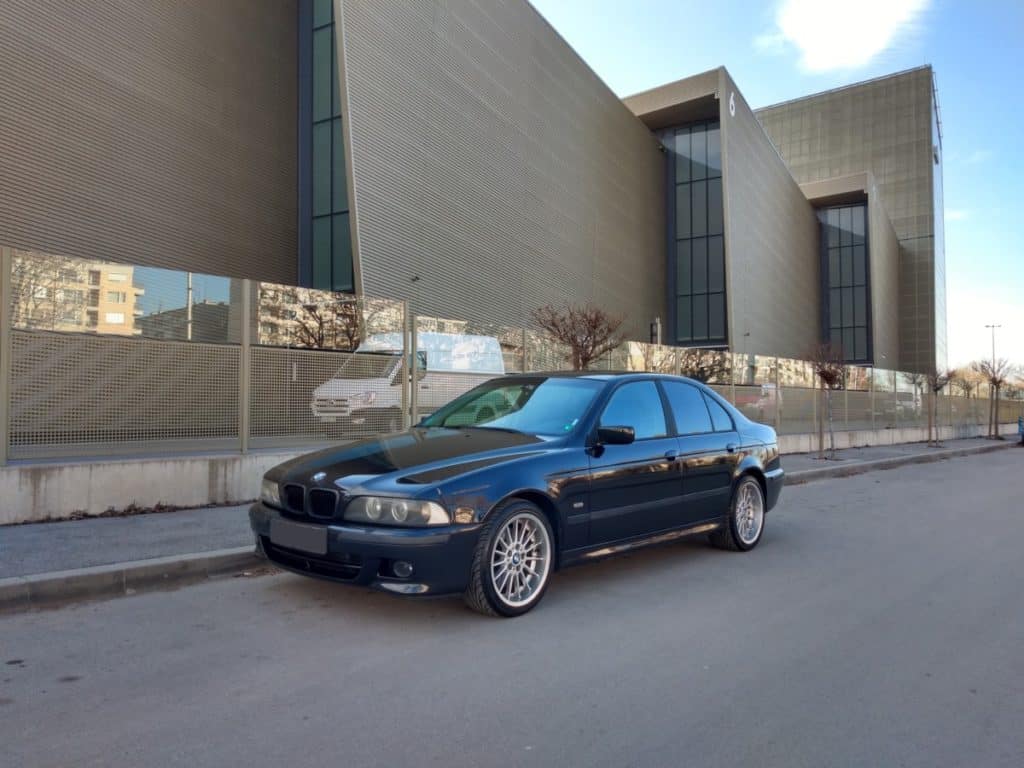
Conclusion
Whether the E39 is to be considered the last of the analogue BMW era, or the first of the new more sophisticated type of BMW cars, is more or less dependent on one’s opinion. It has its faults, but it remains a true BMW nonetheless. One thing is certain, though. Think about it – which car produced after the E39 540i combines a manual transmission, rear-wheel drive, naturally aspirated wonderfully sounding eight-cylinder engine, short-footedness on twisty roads, great comfort on long cruises and a sleek design and presence, with which you can go anywhere, park it next to any car in all settings and be adequate in almost all situations – be it in front of the opera or a gangster night club or taking part in a hooligan drifting competition? It is just like a Swiss-army knife, and I cannot think of another car produced at a later time that gives all of this at the same time.
You will be forgiven if you fall in love with this car – I now know that I am.